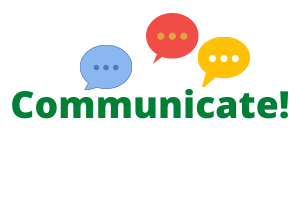What your Benefits’ Voice Says to Employees: “We Care about Your Wellbeing”
 As more and more unprecedented pandemic and social-unrest milestones drench our organizations’ culture, Benefits professionals are uniquely and consummately positioned to make a difference for your workforce.
As more and more unprecedented pandemic and social-unrest milestones drench our organizations’ culture, Benefits professionals are uniquely and consummately positioned to make a difference for your workforce.
Despite these crises, we have already-budgeted resources and messages that programmatically communicate to employees that we care about their wellbeing. Using some of the following suggestions, things we communicate are the best support to leaders for demonstrating their understanding of the challenging, often painful and distracting, circumstances faced by your workforce today.
- Encourage leaders to communicate early and often. Responding urgently at each milestone, and frequently thereafter, may be the top issue. Employees have real concerns for their personal safety and their families’ safety. Anxiety, grief, confusion, distraction are at the forefront of people’s minds. To demonstrate that your organization cares about your workforce, tell them – all things need to be communicated.
- Share your organizational position on racial inequities and dealing with unconscious bias, as well as your inclusion and diversity plans and current offerings. Address social determinants of health.
- Use as many mediums as your organization has available to ensure that messages are heard, and that benefits programs are known:
- Electronic Letters from your President or other Leaders
- Daily broadcasts with updates featuring bite-sized portions of different benefits programs
- Virtual Town Halls (Be sure to record them)
- “Spotlights”/Headlines and/or embedded links to Intranet/Internet web pages exhaustively sharing resources related to the pandemic and evidence that your organization is dedicated to inclusion and equity
- Guest speakers – many of whom are seeking pro bono ways to serve our corporate communities (e.g. scholars, scientists, epidemiologists, diversity practitioners)
- Manager-centric virtual updates focused on financial impacts as well as developmental topics for leading through challenges
- Published Frequently-Asked-Questions
- Prioritize everything related to mental health. Are you keeping your Employee Assistance Program (EAP) partners top-of-mind with your workforce? Have you ensured your policies on PTO, FMLA and accommodations are exhaustive? Are there easily identifiable and accessible options for therapy, counseling, and grief & trauma support? Have you introduced paid or subsidized mindfulness or meditation apps for anytime use? Have you invited your retirement partner to run virtual programs on anything relevant during financially stressful times? Most importantly, are managers encouraged to outreach to employees regularly and supported with conversational tips and contact information for needed resources?
- Plan Benefits Open Enrollment earlier than usual. Plan design changes may be inevitable if fringe savings are needed. In-person Benefits Fairs are unlikely. Will you pivot to a virtual benefit fair? Do you have a plan? Challenging times may point our workforce to consider Benefits changes (e.g. FSAs or HSAs now that OTC products are covered). Furloughed and/or FMLA employees will have questions for you.
- Ask your workforce for their suggestions. With endless options for gathering preferences, use your employees’ opinions. Pulse surveys are the norm, but consider asking directly through all-employee broadcasts, electronic polling during town halls or larger zoom gatherings, one-on-one meetings, virtual “drop-in sessions,” or even facilitated focus groups. Your ROI will benefit from asking first.
- Share endless information on all things related to caregiving. Once dependent care options and school were suspended, the visceral reaction from working caregivers and parents identified employees’ desire to perform their jobs at 100% effort while constrained by working remote. Many experience guilt related to dividing time between family and work, and frustration at the blurred lines between the two. With limited time to explore options, they need easy, frequently-updated information.
- Create opportunities where there’s evidence that you’re taking tangible steps as employers:
- Support your organizations’ affinity groups (often labeled “employee resource groups”)
- Donate to organizations fighting social injustice
- Share STORIES: Invite submissions that you publish of employees giving back, working at the front line, encouraging others, etc.
- Make possible PTO donations from one employee to another
- Identify daily “no-meetings” zones (e.g. no scheduled meetings between noon and 1:30 PM to encourage self-care or family connections)
- Encourage using email signatures or out-of-office messages that recognize the current landscape. Anyone can add an encouragement or self-care tip to signatures (e.g. “Take a walk”). Using automated replies for email can lessen stress (e.g. “My response may be delayed…”)
- Sponsor virtual events focused on staying connected, using the hundreds of creative ways that have surfaced
- Strategically consider ways prioritizing both organizational fiscal stewardship and employees’ needs. Most budgets have been impacted by the pandemic, requiring Benefits Teams to identify savings. Think through employee demographics when choosing between programs.
- Remind leaders to thank employees. Sounds simple, but often overlooked. If you have an automated recognition platform, this is the time for managers to use it – at the risk of excess. If you don’t, there is no effort appreciated more than handwritten notes sent to employees’ homes or emails with personalization.
- Give yourself grace. Your continued strength is as important as anything related to your workforce’s wellbeing. Remember to “put on your oxygen mask first.”
While in no way exhaustive or in-ranked-order, NEEBC is a resource for these suggested best practices, as well as others.
Robin Antonellis is the Vice President of Human Resources at Dana-Farber Cancer Institute and a NEEBC Board Member.

